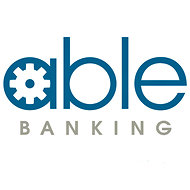The proposals are meant to sharply reduce the amount of money that would be raised by a controversial tax on bank deposits, as originally planned in an international bailout package totaling €10 billion, or about $13 billion, that the Cypriot Parliament rejected the night before.
But even the revised plan contains a bank tax that, while much smaller than originally proposed, might still not be palatable to Parliament. Under the new plan, all Cypriot bank deposits of up to €100,000 would be hit by a one-time tax of 2 percent. Deposits above that threshold would be subject to a 5 percent levy.
The fallback was being cobbled together as Cyprus’s finance minister pressed his case in Moscow on Wednesday in hopes of securing additional aid from Russia, many of whose wealthiest citizens have big deposits in Cypriot banks.
At the same time, the Cypriot government decided to keep banks closed through the end of the week in an effort to prevent a run on Cyprus’s financial institutions. Banks, which would reopen Tuesday after a national holiday on Monday, have frozen all accounts in a financial crisis here that risks tipping the country into default and sowing turmoil across the euro zone.
Banks have been closed since Saturday, and the authorities have ordered banks to keep automated bank machines filled with cash as long as their doors remain shut. But that has been of little help to the thousands of international companies who do banking in Cyprus, which cannot transfer money in and out of those accounts to conduct business.
The extended bank holiday is designed to buy time for the Cypriot authorities to reach an agreement with the so-called troika of rescuers — the International Monetary Fund, the European Central Bank and the European Commission — whose representatives were in Nicosia on Wednesday but were not certain to sign off on Cyprus’s latest plan.
Three banks dominate the economy, and each is edging close to collapse. The government was also making tentative plans to merge at least two of them — Cyprus Popular Bank and Bank of Cyprus — and place the healthy assets into a one entity, while moving troubled assets into a so-called bad bank.
With all sides fearing that a crisis is imminent, even the Church of Cyprus, one of this Mediterranean island’s biggest investors, was offering to throw its considerable wealth behind the rescue effort.
European officials, and especially the European Central Bank, are watching the situation with alarm, said a person close to the discussions who was not authorized to speak publicly. Right now, Cypriot banks, crippled by their heavy exposure to Greece’s collapsed economy, are heavily dependent on low-interest financing from the E.C.B., which could be cut off if the banks do not remain solvent.
If Cyprus does not soon receive a financial lifeline, European officials fear that “the damage would be enormous, and the country itself would be at risk of collapse,” the person close to the discussions said. Officials are concerned about the risk that Cyprus might need to leave the euro currency union, creating “a painful situation that would spur chaos,” this person said.
On Wednesday morning, the finance minister of Cyprus, Michalis Sarris, met with his Russian counterpart, Anton G. Siluanov, at the Russian Finance Ministry. In the afternoon Mr. Sarris met for about 90 minutes with a deputy prime minister, Igor I. Shuvalov, at the main government offices in the Russian White House.
Cypriot banks racked up huge losses in the past several years by issuing loans to businesses in Greece that are now virtually worthless as that country grapples with the fourth year of a severe recession. The banks also took huge financial losses on large holdings of Greek government debt, which they bought when times were good in order to profit from attractive interest rates. The bailout crisis has outraged average Cypriots, many of whom oppose the government’s skimming their accounts to pay for the banks’ mistakes.
This article has been revised to reflect the following correction:
Correction: March 20, 2013
An earlier version of this article incorrectly described the days the banks would be closed. They were scheduled to reopen on Tuesday.
Article source: http://www.nytimes.com/2013/03/21/business/global/after-deal-is-rejected-cyprus-scrambles-to-find-funds.html?partner=rss&emc=rss
